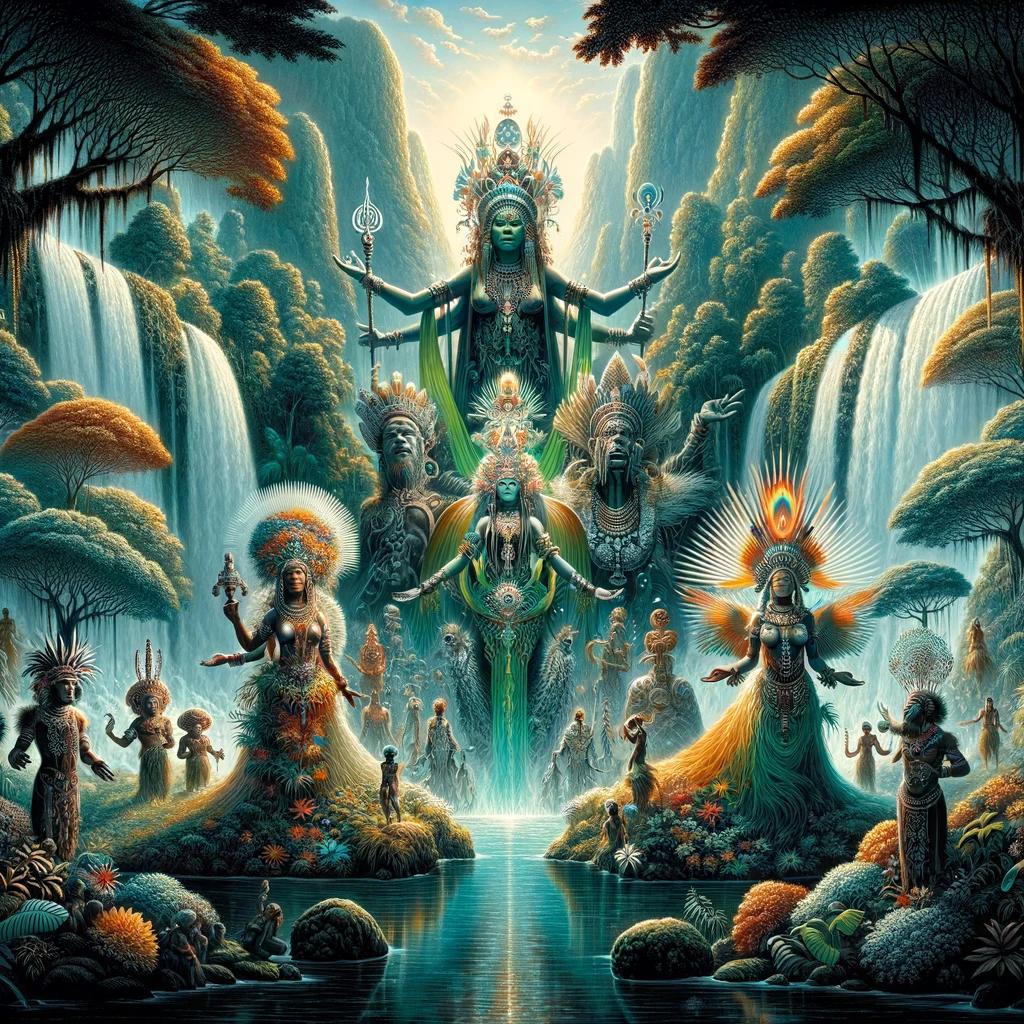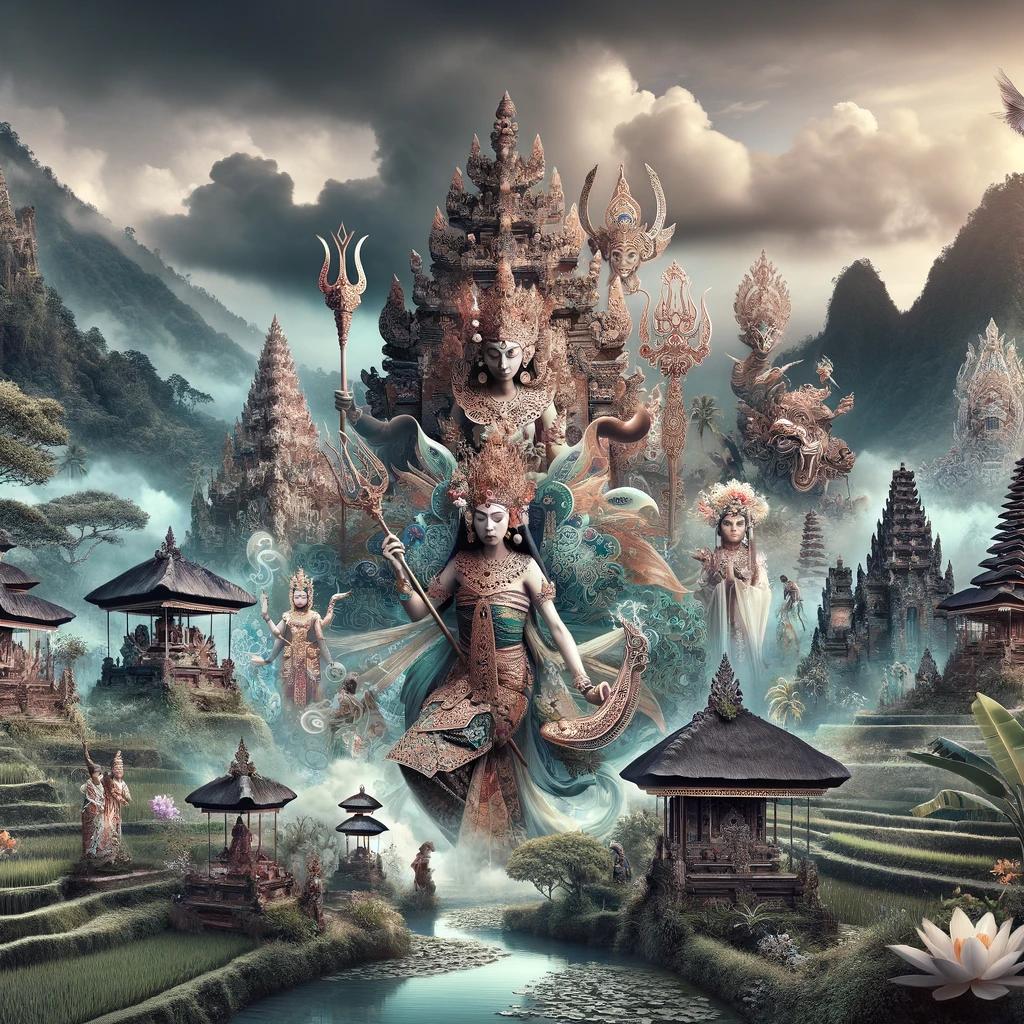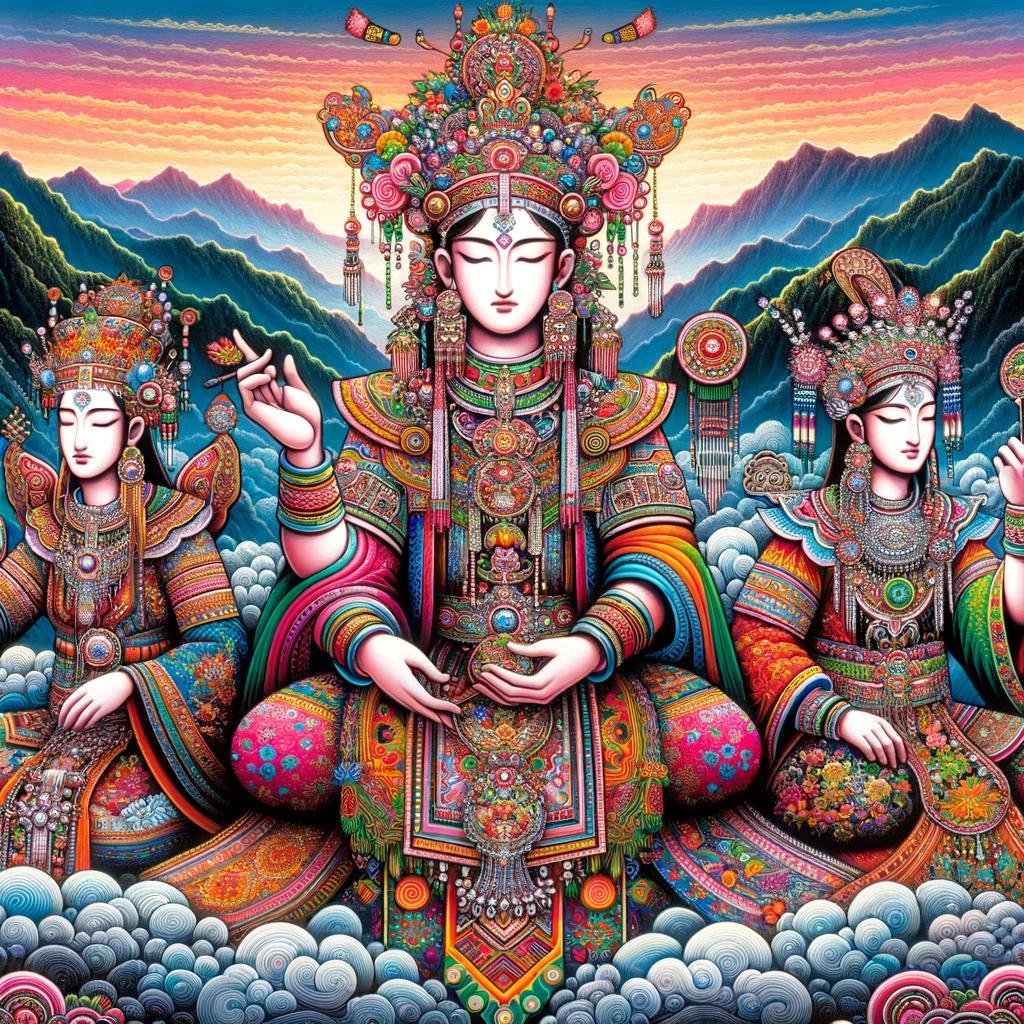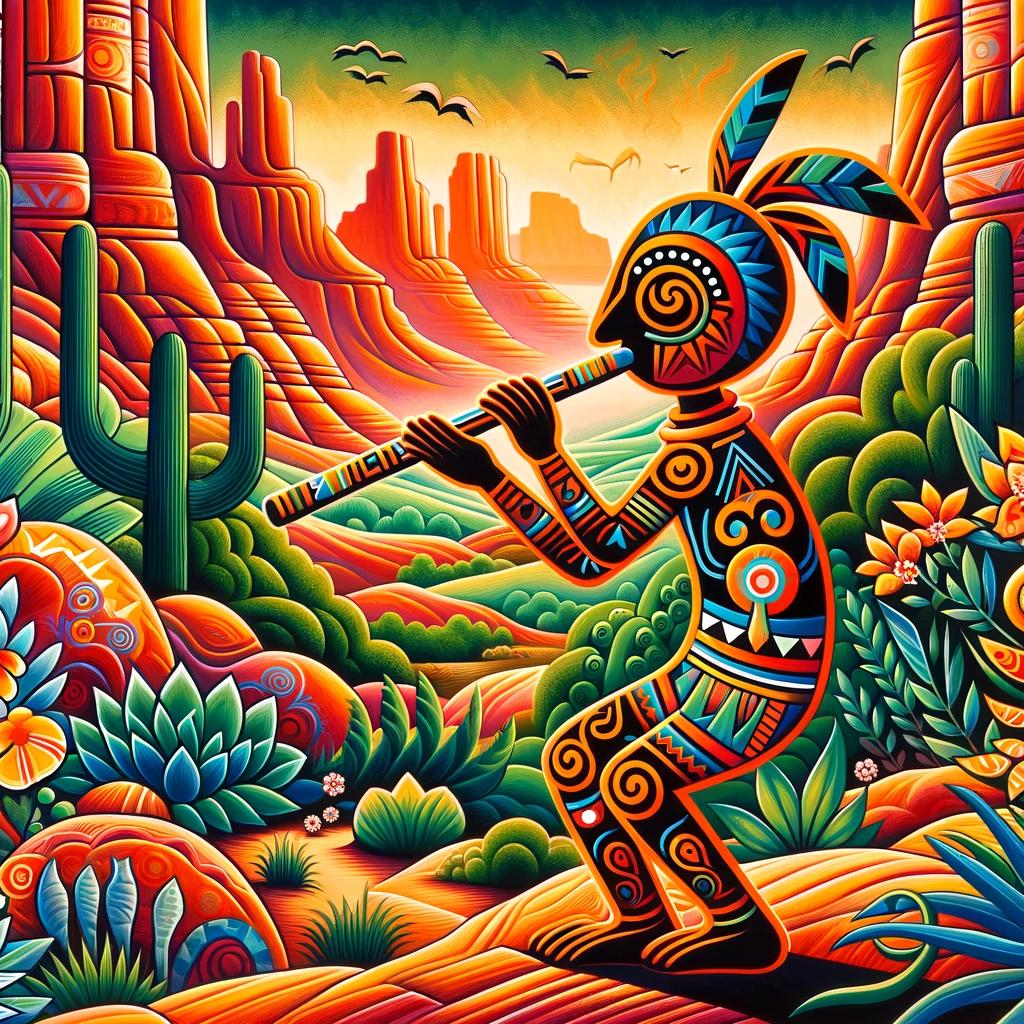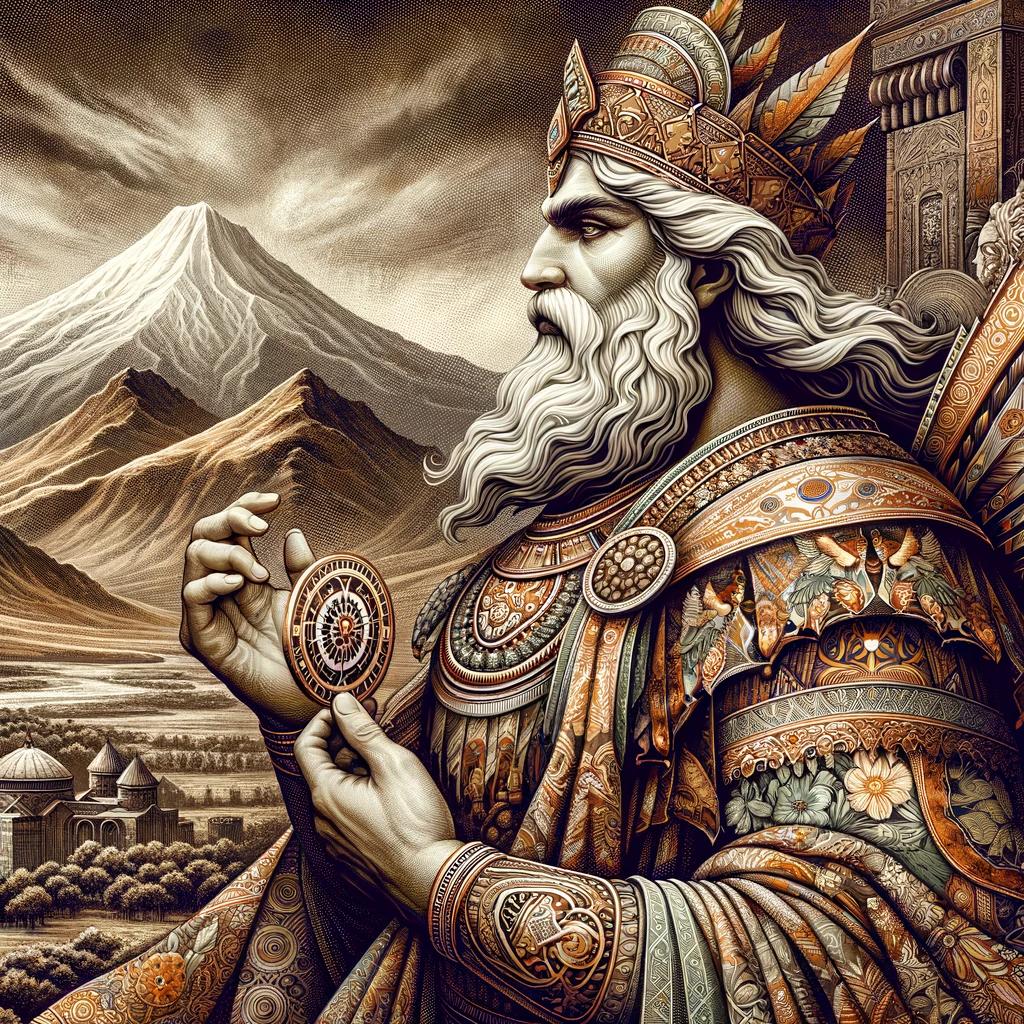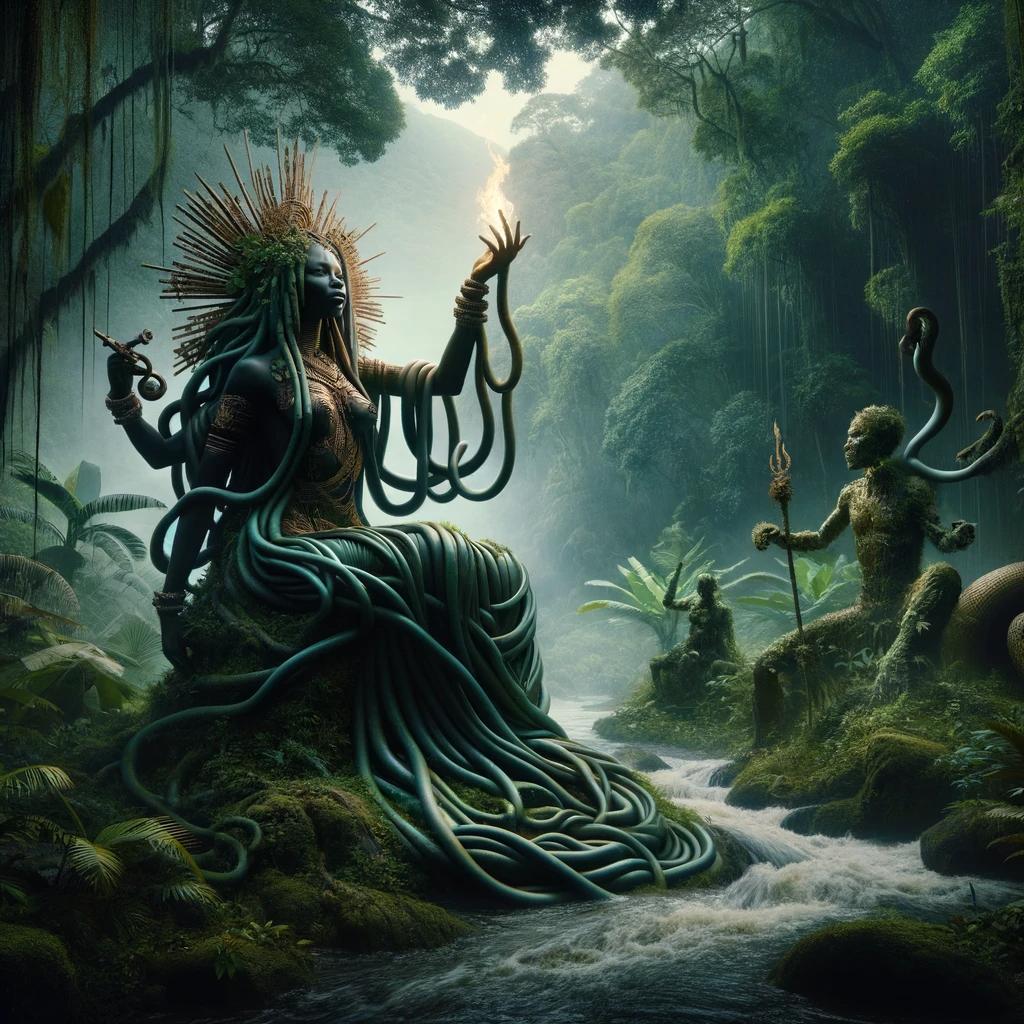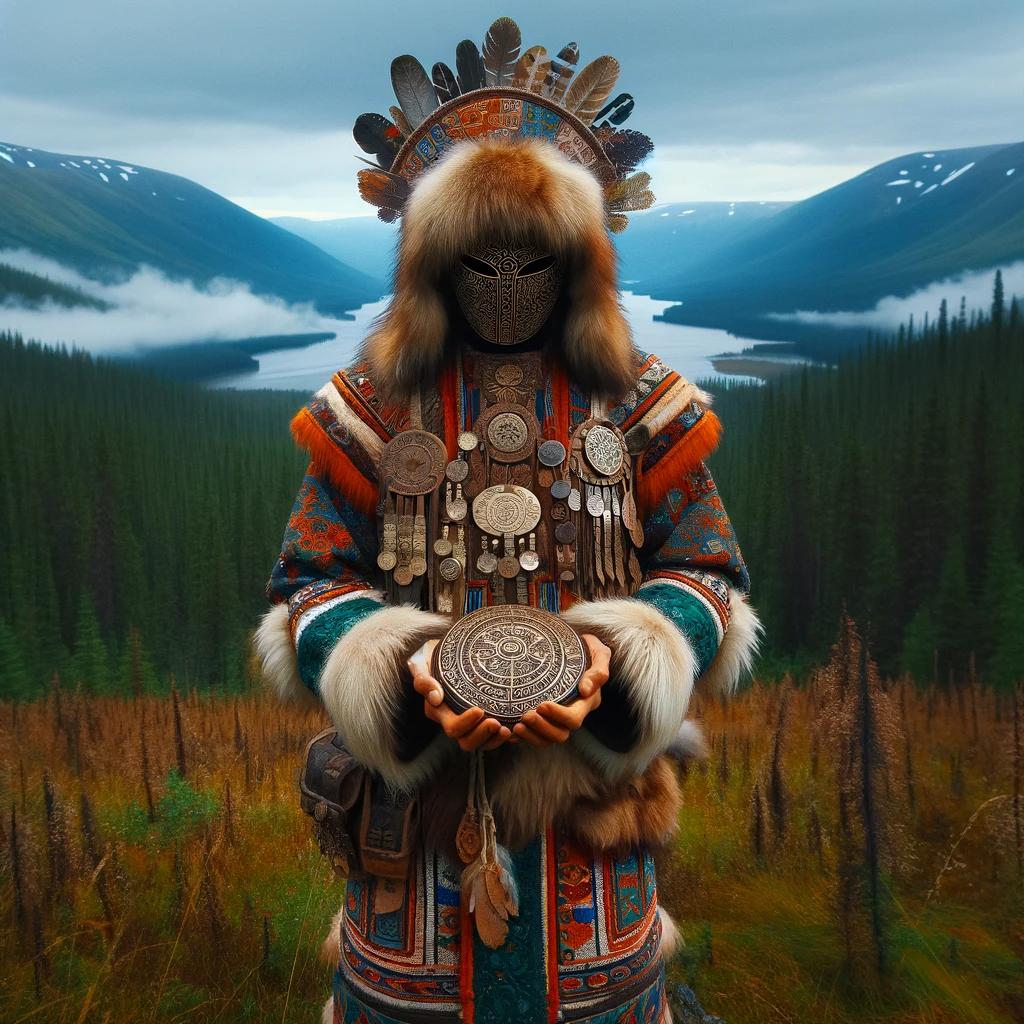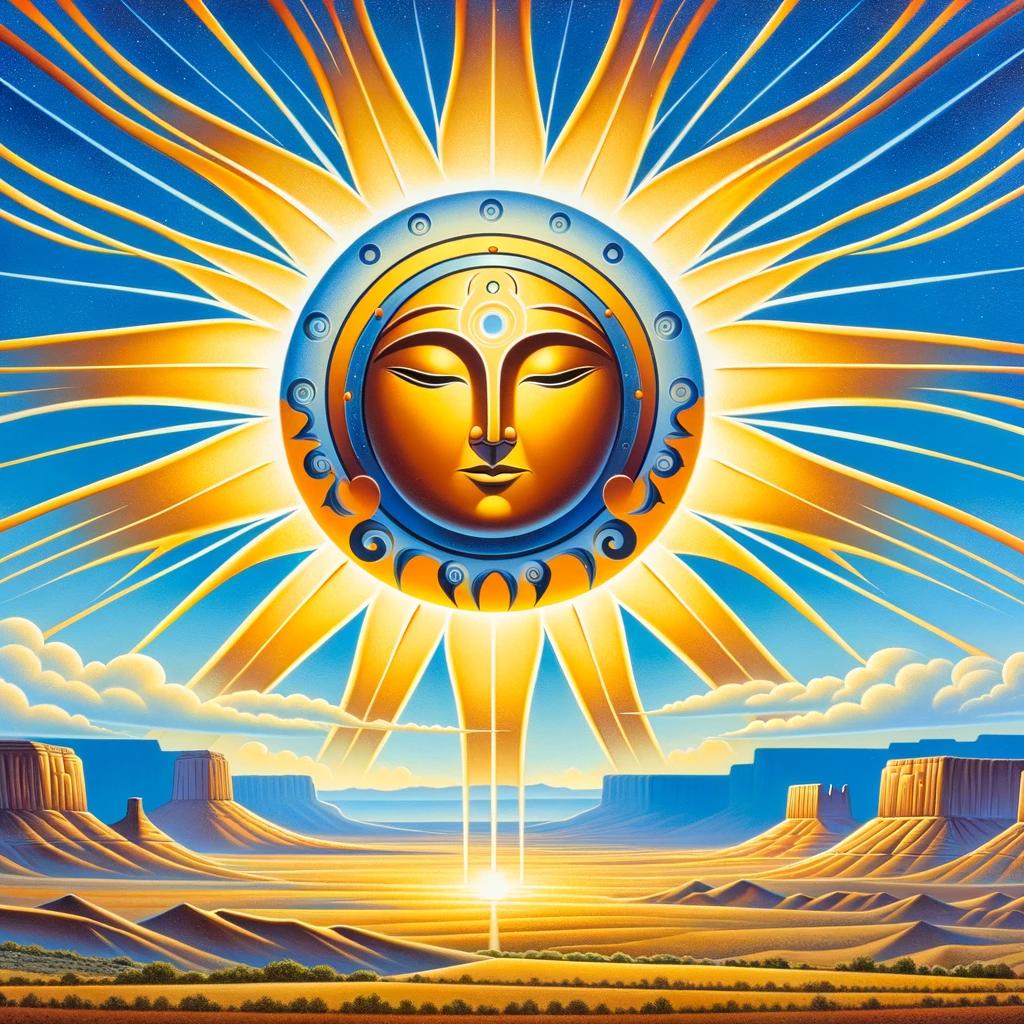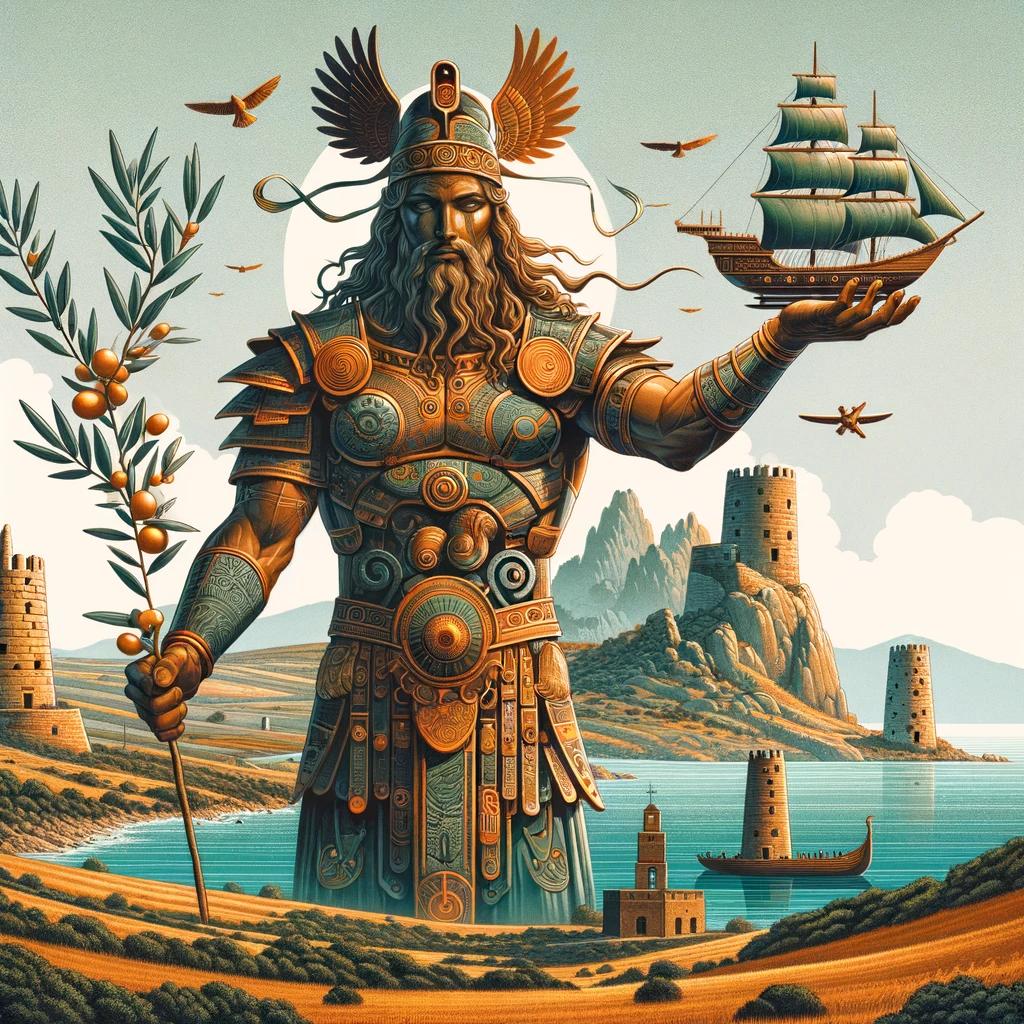Papua New Guinea Mythology: Unveiling the Gods and Goddesses of Melanesia
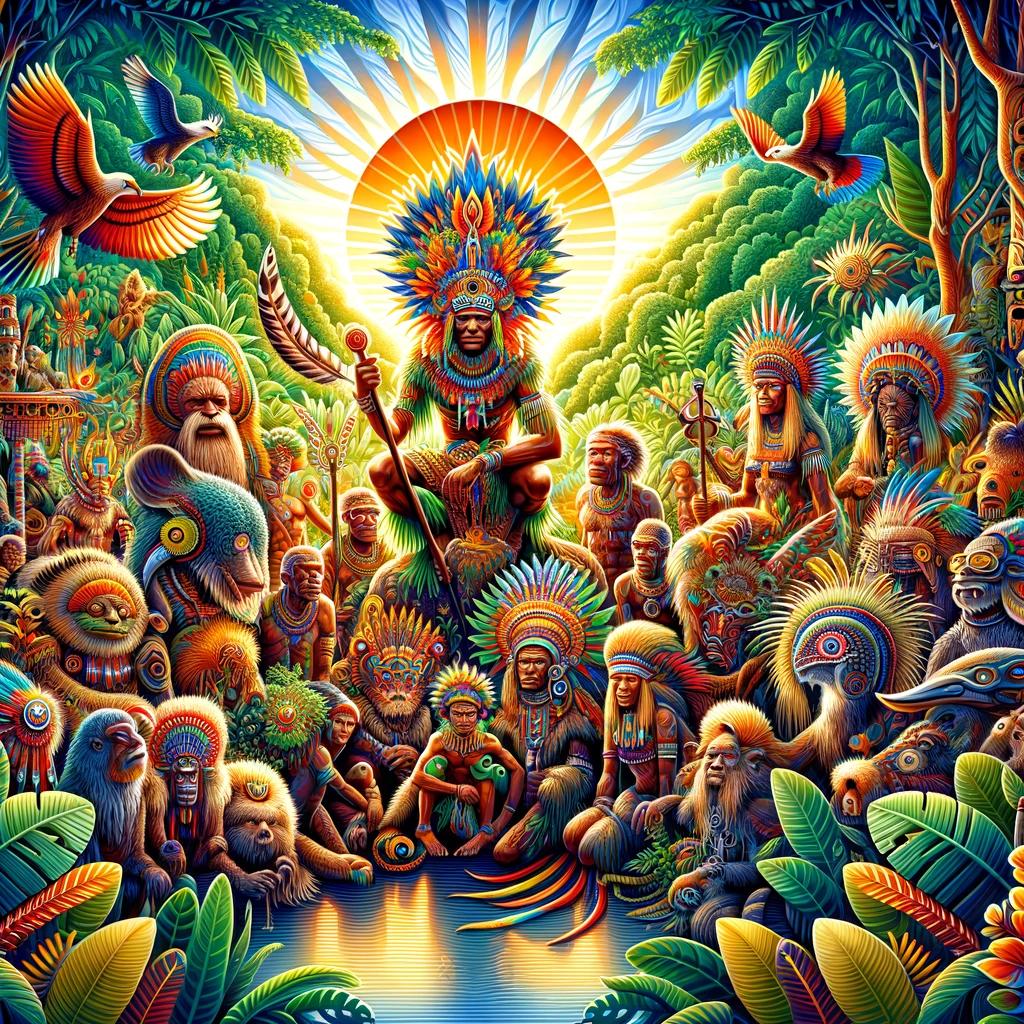
Papua New Guinea mythology is a fascinating realm of gods, goddesses, and elemental spirits. From the giant spider god Areop-Enap to the sun deity Dudugera and the cosmic serpent Agunua, these deities play significant roles in Melanesian culture.
The mythology also explores the resentment of Murua, the sun’s consort, towards humanity. Additionally, there is Olifat, the tricky god who brought fire and tattoos. These mythological narratives intertwine with the natural world, where spirits personify forests and lakes.
The sun and night hold both divine gifts and challenges, affecting human health. Melanesian mythologies, shared among diverse islands, are crucial to understanding and appreciating this rich cultural heritage.
The Cultural Significance of Mythology in Papua New Guinea
Papua New Guinea is a land rich in diverse cultural traditions, and mythology plays a vital role in shaping its cultural identity.
Traditional beliefs and practices in Papua New Guinea are deeply intertwined with mythological narratives that reflect the people’s understanding of the world and their place within it.
Traditional Beliefs and Practices in Papua New Guinea
The traditional beliefs and practices of the indigenous peoples in Papua New Guinea are deeply rooted in a profound reverence for nature and the spiritual realm.
These beliefs are often passed down through generations orally, preserving the wisdom and sacred knowledge of their ancestors. Rituals, ceremonies, and sacred sites are integral elements of their spiritual practices, connecting the people to their ancestral spirits and gods.
Role of Mythology in Shaping Cultural Identity
Mythology plays a significant role in shaping the cultural identity of Papua New Guinea. Myths and legends serve as a cultural compass, guiding individuals and communities in understanding their history, values, and worldview.
Through these stories, people gain insights into their origins, the relationship between humans and the divine, and the moral lessons embedded within the narratives.
The mythology of Papua New Guinea reflects the people’s deep connection with nature and their reliance on it for sustenance, shelter, and spiritual nourishment.
The stories narrate the creation of the world, the relationship between humans and the natural environment, and the interplay between spirits and humans.
- Mythology provides explanations for natural phenomena, such as the origin of mountains, rivers, and animals.
These stories help to foster a harmonious relationship with the natural world.
- They also provide guidance on ethical behavior, social norms, and the importance of community values.
- Myths and legends are instrumental in passing down historical and cultural knowledge, ensuring its preservation for future generations.
By exploring the mythology of Papua New Guinea, we gain a deeper understanding of the cultural fabric that shapes the identity of its diverse communities.
The intricate interplay between traditional beliefs, storytelling, and the natural world highlights the richness and significance of Papua New Guinea’s mythology in the cultural tapestry of the nation.
Gods and Goddesses in Papua New Guinea Mythology
Exploring the rich mythological tapestry of Papua New Guinea reveals a diverse pantheon of gods and goddesses.
Each deity represents a unique aspect of Melanesian culture, offering insights into the beliefs and values held by the indigenous communities.
Areop-Enap: The Giant Spider God
Areop-Enap, the colossal spider god, stands prominently as one of the most significant deities in Nauruan mythology. As both a creator and a trickster figure, this giant arachnid personifies the intricate interplay between creation and chaos, weaving together the fabric of Papua New Guinean myths.
Dudugera: The Sun God and his Negative Influence
Within the realms of Papua New Guinean religion, Dudugera assumes the role of the sun god. However, unlike other benevolent solar deities, Dudugera is often depicted with a malevolent intent. Associated with scorching heat and drought, his influence is seen as a terrible affliction for the world, challenging the balance of life itself.
Murua: The Sun’s Consort and the Resentment Towards Humanity
Murua, the consort of the sun, holds a complex relationship with humanity. In the myths of Murua, she guarded the sun for her exclusive use until compelled by her son to share its warmth and light.
Since then, she harbors resentment toward humanity, leading to narratives where the sun’s eternal rays bring illness, emphasizing the delicate equilibrium between humankind and celestial forces.
Agunua: The Cosmic Serpent Deity
As the supreme god of San Cristóbal Island (Makira), Agunua towers as a symbol of divinity in the mythologies of Papua New Guinea.
This cosmic serpent deity holds sway over the heavens and the sea, drawing sacred significance from the first coconut from each palm tree. Agunua encapsulates the awe-inspiring mysteries of the natural world and the interconnectedness between land and sea.
Olifat: The Tricky God and Bringer of Fire and Tattoos
Olifat, son of Lugeilan (the god of knowledge and magic) and Tarisso (a mortal woman), manifests as a mischievous god in Papua New Guinean mythology. Originating from the divine lineage of Anulap (god of knowledge and magic) and Hit (the octopus goddess of the underworld), Olifat is notorious for causing havoc in mortal lives.
However, he bestows upon humanity the gifts of fire and tattoos, symbolizing the transformative power of innovation and artistic expression.
Elemental Spirits and Nature Personifications
The rich mythology of Papua New Guinea encompasses not only the gods and goddesses but also the elemental spirits and personifications of nature. These spirits are believed to embody and represent various natural elements such as forests and lakes, playing significant roles in the lives of the local communities.
The Spirits of Forests and Lakes
Within the mythology of Papua New Guinea, the spirits of forests and lakes are revered and hold great spiritual significance. These spirits are often depicted as supernatural beings with monstrous appearances, personifying the raw power and mysteries of the natural world.
They are believed to possess the ability to influence and control the elements, shaping the environment and impacting the lives of those who dwell in their domains.
- These forest spirits are venerated as guardians of the woodlands, responsible for the abundant flora and fauna found in the dense jungles of Papua New Guinea.
They are believed to have the power to bless or curse individuals who enter their territories.
- Lake spirits, on the other hand, are associated with the vast bodies of water that dot the landscape of Papua New Guinea.
They are believed to protect the lakes, ensuring their purity and fertility. These spirits may be invoked for blessings, such as bountiful fishing or successful agricultural yields.
The Influence of Spirits on Daily Life
The presence of these elemental spirits extends beyond their roles as supernatural entities.
In the mythology of Papua New Guinea, these spirits are believed to actively participate in the daily lives of the local communities, influencing various aspects of their existence.
- The forest spirits, for instance, are believed to have the power to heal physical and spiritual ailments.
They may be invoked through rituals, songs, and offerings to seek their aid in matters of health and well-being.
- Similarly, the lake spirits are revered for their abilities to bring prosperity and abundance.
Individuals may engage in rituals and ceremonies to establish a harmonious relationship with these spirits, seeking their blessings for successful harvests or thriving businesses.
These elemental spirits and nature personifications play a vital role in the culture and spirituality of Papua New Guinea, shaping the beliefs and traditions that have been passed down through generations.
Their presence not only underscores the close relationship between humans and nature but also reflects the profound respect and appreciation for the diverse ecosystems that form the backdrop of Melanesian life.
The Mythological Significance of the Sun and the Night
Within Papua New Guinea mythology, the sun and the night hold great symbolic meaning and play crucial roles in the narratives. They are seen as both divine gifts and challenges, shaping the beliefs and practices of Melanesian cultures.
Day and Night – Divine Gifts and Challenges
The alternation between day and night is viewed as a sacred cycle in Melanesian mythologies. The sun represents illumination, life, and warmth, providing light to guide the way and sustain the natural world.
It is seen as a divine gift bestowed upon humanity, allowing growth, productivity, and the fulfillment of daily activities.
Conversely, the night symbolizes transformation, rest, and rejuvenation. It is considered a necessary counterpart to the sun, providing a space for reflection, dreams, and introspection.
During the night, the spirits and ancestors are believed to be more active, and rituals and ceremonies are often performed to honor and seek their guidance.
However, the night can also present challenges.
In some myths, extended periods of darkness, known as “day eternal,” are perceived as a curse. The absence of sunlight during these periods disrupts the natural balance, causing illness and hardship for both humans and the environment.
This highlights the delicate relationship between light and darkness, underscoring the importance of maintaining harmony and respecting the rhythms of nature.
The Relationship Between the Sun and Human Health
In Melanesian mythology, the sun’s influence extends beyond its role as a celestial body. It is believed to have a profound impact on human health and well-being. Sun worship and rituals are conducted to ensure the community’s vitality and safeguard against illness and misfortune.
Conversely, excessive solar exposure or the disturbance of the sun’s power can lead to adverse effects. In some myths, individuals who disrespect or defy the sun’s authority face dire consequences, such as sickness, drought, or even death.
These narratives emphasize the need for balance, reverence, and harmony with nature, particularly in relation to the sun’s immense power.
- The sun represents illumination, life, and warmth.
- The night symbolizes transformation, rest, and rejuvenation.
- Extended periods of darkness can disrupt the balance and cause illness.
- Sun worship and rituals ensure human vitality.
- Disrespecting or defying the sun can lead to adverse effects.
The mythological significance of the sun and the night in Papua New Guinea mythology speaks to the intricate interplay between the divine and the human, offering insight into the cultural perspectives and beliefs of Melanesian communities.
Diversity of Mythological Beliefs in Melanesia
The rich tapestry of mythological beliefs in Melanesia extends beyond Papua New Guinea, encompassing surrounding islands such as the Solomon Islands, Vanuatu, New Caledonia, and Fiji. Each of these regions boasts its own unique mythological traditions and divinities, reflecting the diverse cultures and ethnic groups inhabiting the area.
Mythological Traditions in Surrounding Islands
In the Solomon Islands, the mythology revolves around deities like Agunua, the serpent god revered as the supreme deity of San Cristóbal Island (Makira). Agunua’s significance extends to being the god of the sea, attaching sacred value to the first coconut from each tree.
In Vanuatu, the mythological landscape includes powerful figures such as Tagaro, the primordial ancestor god associated with war and peace. Other deities like Qat and Marawa play crucial roles, representing creation and fertility, respectively.
These mythological traditions form an integral part of the cultural tapestry of the islands.
Shared Beliefs and Cultural Exchange in the Region
Despite the diversities in Melanesian mythologies, there are also commonalities that tie the various cultures together. Shared beliefs in supernatural beings, ancestral worship, and the role of music in religious rituals demonstrate the cultural exchange and interconnectedness among the different ethnic groups.
The mythologies of Melanesia, including Papua New Guinea, serve as a testament to the enduring spiritual and cultural heritage of the indigenous peoples. Understanding and appreciating the diversity of these mythological traditions foster respect and preservation of their cultural identity.
Understanding and Appreciating Melanesian Mythologies
Understanding and appreciating Melanesian mythologies is fundamental to recognizing the rich cultural heritage of Papua New Guinea and neighboring islands. The mythologies of this region provide deep insights into the belief systems, traditions, and values of the indigenous communities that have thrived here for centuries.
Importance of Respecting and Preserving Cultural Heritage
Respecting and preserving the cultural heritage of Melanesian mythologies is of utmost significance. These mythologies are not merely ancient stories but hold immense wisdom and knowledge, passed down through generations. They provide a unique lens through which we can better comprehend the spiritual, social, and environmental aspects of Melanesian life.
By respecting and preserving these mythologies, we honor the identities, histories, and contributions of the Melanesian communities. It is crucial to protect this intangible cultural heritage from erasure, ensuring that future generations can connect with their roots and gain valuable insights from these mythological traditions.
The Role of Mythologies in Melanesian Communities
Mythologies play a central role in the lives of Melanesian communities, guiding their everyday practices, beliefs, and rituals. They serve as both a source of inspiration and a moral compass, providing frameworks for understanding the world around them and fostering a harmonious relationship with nature and the divine.
These mythologies often recount the adventures and trials of gods, goddesses, and ancestral spirits, imparting valuable lessons about bravery, humility, resilience, and the consequences of human actions. Through these narratives, Melanesian communities find cultural continuity, shared identity, and a sense of belonging.
Mythologies also inform and influence various aspects of Melanesian culture, such as art, music, dance, and traditional practices. They offer a profound understanding of the spiritual and supernatural realms, guiding ceremonies, healing practices, and rites of passage.
In this way, mythologies act as a unifying force, strengthening the fabric of Melanesian societies and preserving their unique cultural tapestry.
It is essential for individuals outside of Melanesian communities to approach these mythologies with respect, curiosity, and a desire to learn.
Through understanding and appreciating Melanesian mythologies, we enrich our own cultural perspectives, promote cultural diversity, and foster cross-cultural dialogue and understanding.
By acknowledging the profound significance of Melanesian mythologies, we recognize the wisdom of these ancient tales and their enduring relevance in modern times.
Through continued exploration and appreciation, we can ensure that these mythologies continue to resonate and inspire future generations.
.











